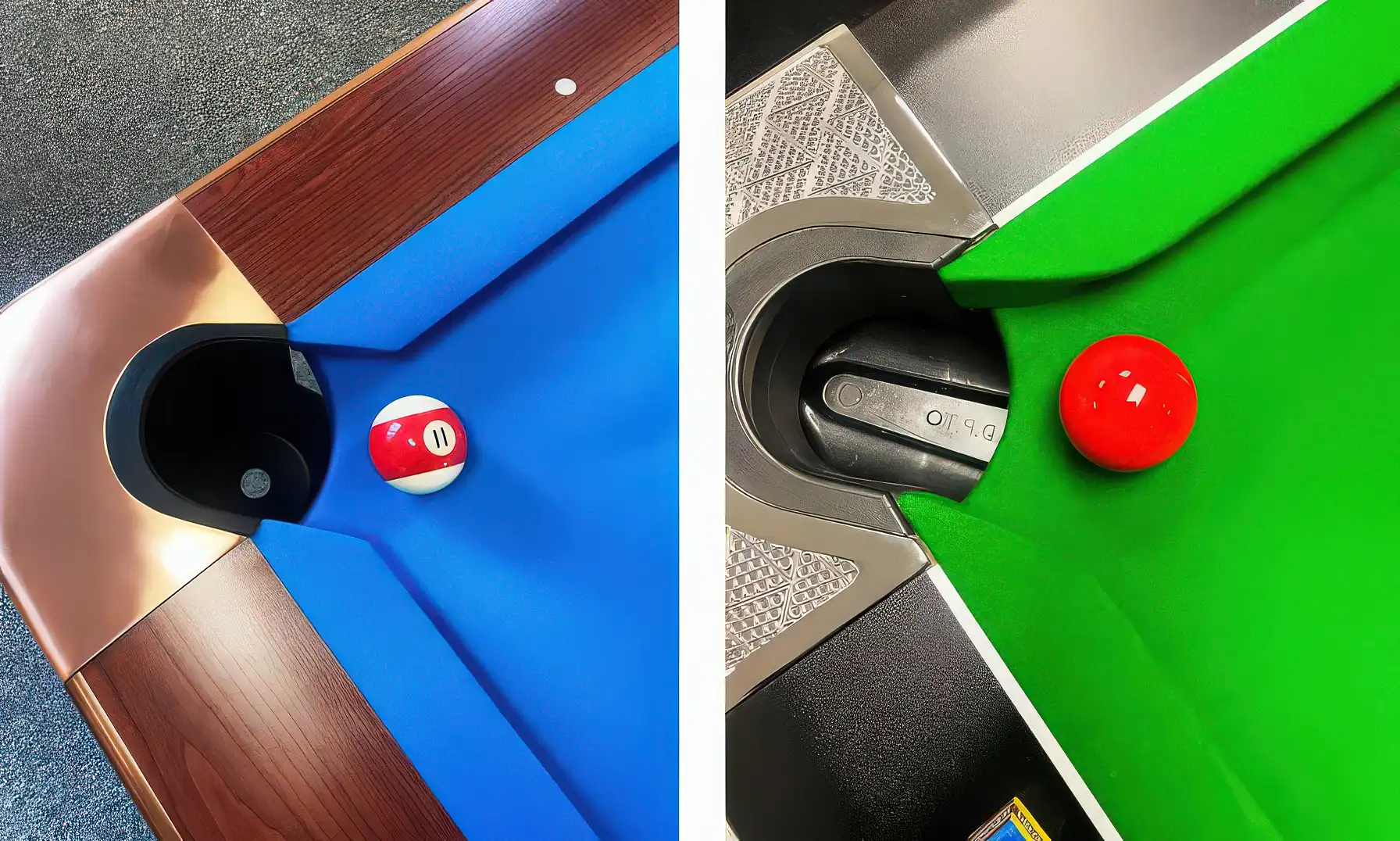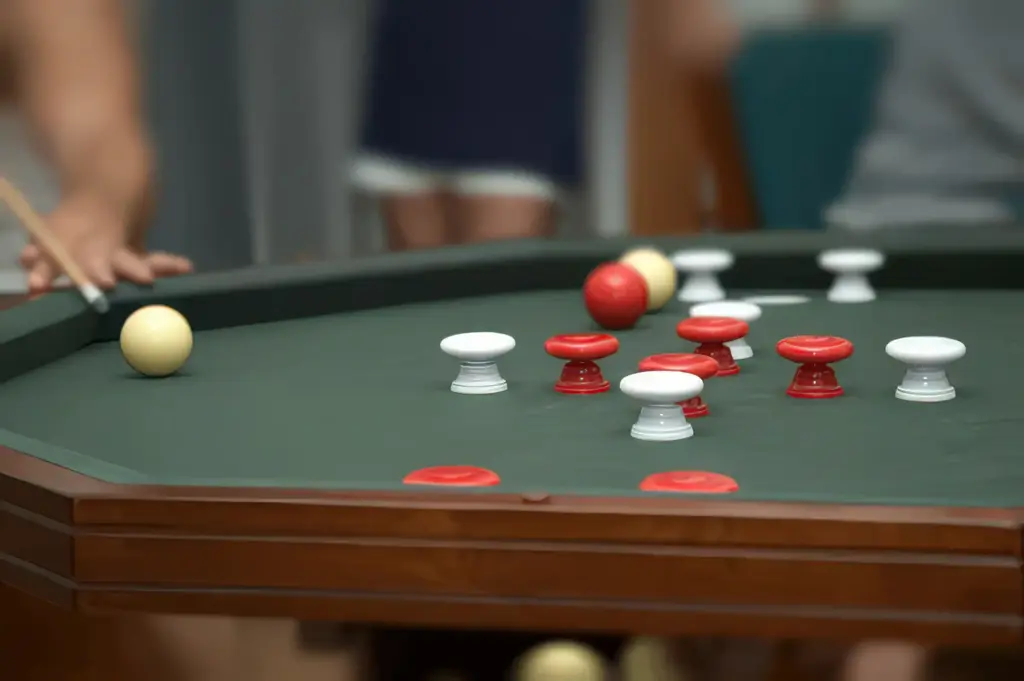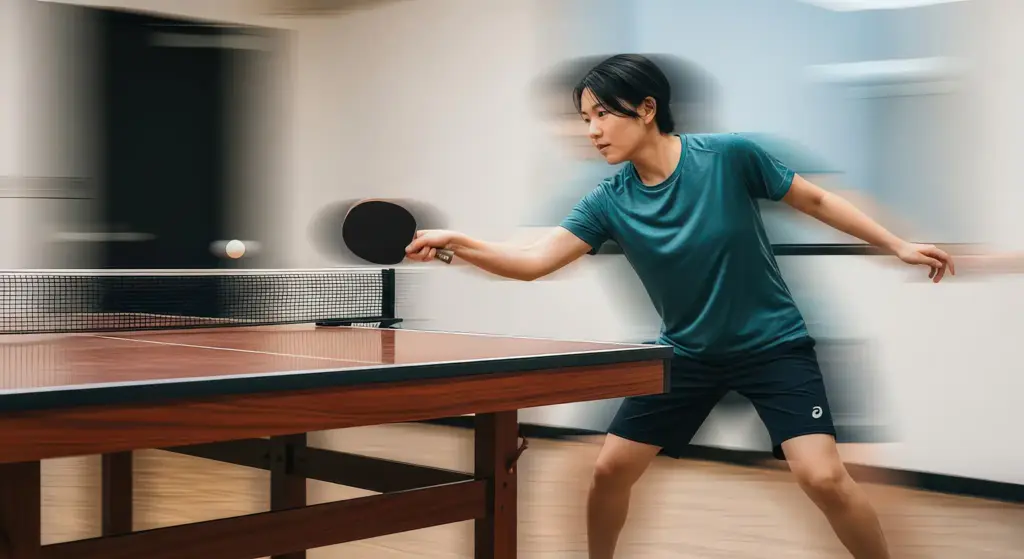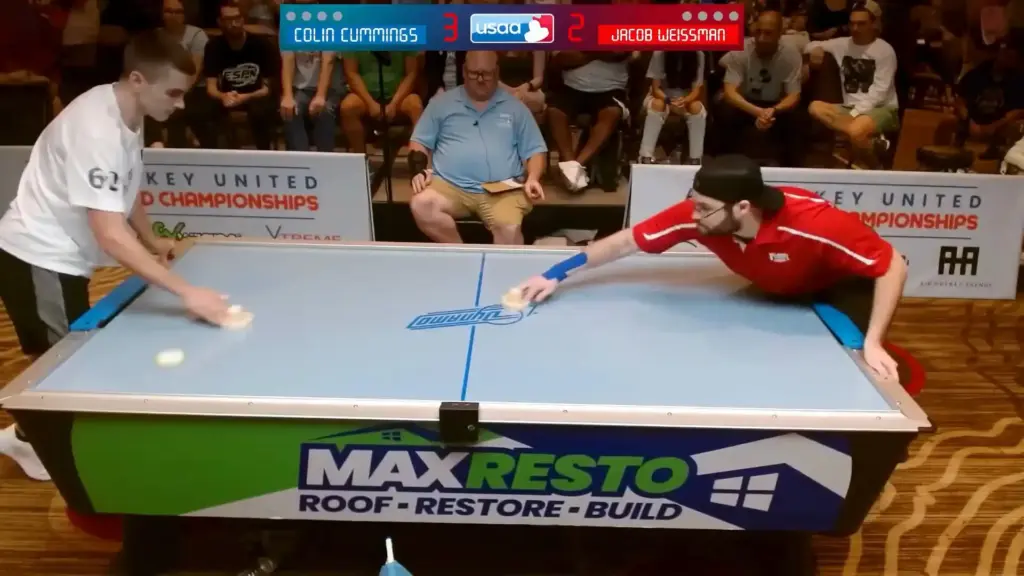Introduction
Have you ever walked into a pub or a high-end billiards hall and noticed the pool table just felt… different? You’re not imagining things. The world of pool is split between two titans: the bold, brash American-style table and its more reserved, tactical English counterpart. Choosing the right one isn’t just about aesthetics; it’s about the very soul of the game you want to play. Many aspiring players invest in a table without understanding these crucial differences, only to find the gameplay experience isn’t what they expected. This guide will illuminate the distinct characteristics of american vs english pool tables, ensuring your game room centerpiece perfectly matches your playing style.
Key Takeaways
- American pool tables are larger, with wider pockets and bigger balls, promoting a faster, more aggressive style of play.
- English pool tables are smaller, with narrow, rounded pockets and smaller balls, demanding greater precision and tactical, defensive strategies.
- The most common American pool table dimensions for homes are 8-foot tables, while 9-foot tables are the professional standard.
- The standard English pool table size for tournaments is 7-foot, which has a smaller playing surface than a 7-foot American table.
- The rules of the games played on each table, like American 8-ball vs. English blackball, are fundamentally different and shape the overall experience.
What Are the Key Differences in Table Dimensions?
The most immediate difference between American and English pool lies in the table’s size. American pool tables are generally larger, built with a strict 2:1 ratio of length to width for their playing surface. This consistency is key to what makes a table “regulation.” The standard sizes you’ll encounter are 7-foot, 8-foot, and 9-foot tables. The 7-foot “bar box” is a common sight in commercial venues, while the American 8-foot pool table dimensions make it the most popular choice for home game rooms, offering a great balance of challenge and space efficiency. For those seeking a professional-grade experience, the 9-foot table is the tournament standard, demanding superior skill to navigate its vast playing area.
Conversely, English pool table size conventions are different. The two primary sizes are 6-foot and 7-foot, but this measurement refers to the overall cabinet length, not just the playing surface. This is a critical distinction; the playing area of a 7-foot English table is noticeably smaller than that of a 7-foot American table. The 7-foot model is the standard for official UK tournaments and professional play. The smaller overall footprint of English tables makes them a practical option for pubs and homes where space is at a premium. The standard height for both table types is quite similar, typically ranging from 29.25 to 32.7 inches, ensuring a comfortable playing posture for most players.
| Table Type | Size | Typical Playing Area (inches) |
| American | 7-foot | 78 x 39 |
| American | 8-foot | 88 x 44 |
| American | 9-foot | 100 x 50 |
| English | 6-foot | ~63 x 32 |
| English | 7-foot | ~72 x 36 |
*For a detailed breakdown of room size requirements, see this guide to standard pool table dimensions.
How Do the Pool Balls and Pockets Compare?
Beyond the table’s frame, the equipment used defines the game. American pool balls are larger and heavier, with a standard diameter of 2 1/4 inches and weighing between 5.5 and 6 ounces. This added mass contributes to greater momentum, influencing break shots and the dynamics of ball collisions. These larger balls are aimed at generously sized pockets. The pool table pocket size on an American table is wide and angular, with corner pockets measuring around 4.5 inches and side pockets being even wider at about 5 inches. This forgiving design makes potting balls easier, encouraging a more aggressive, fast-paced game.
On the other side of the pond, English pool balls are significantly smaller and lighter, with a standard diameter of just 2 inches (or sometimes 2 1/16 inches). A unique feature, especially on coin-operated English tables, is a cue ball that is even smaller (1 7/8 inches) to work with the ball-return mechanism. These smaller balls are paired with much tighter pockets. English pockets are narrow with rounded “shoulders” at the entrance. The opening is often just over 3 inches wide, demanding a much higher degree of accuracy from the player. A shot that’s slightly off-center is more likely to be rejected by the rounded cushion, making English pool a game that heavily rewards precision and punishes carelessness. You can find more information in this guide to the differences between American and English pool.
What Are the Main Differences in Gameplay and Rules?
The differences in equipment naturally lead to vastly different games. American pool is dominated by two main rule sets: 8-ball and 9-ball. In American 8-ball rules, players are assigned either solid or striped balls and must pocket their entire group before legally sinking the 8-ball. The game often requires players to “call” their intended shot, adding a layer of declared skill. American 9-ball rules are a faster, rotational game where the objective is to legally pocket the 9-ball, but you must always hit the lowest-numbered ball on the table first. Fouls in both games typically result in the opponent getting “ball-in-hand,” a powerful advantage according to the official UPA Tour 8-Ball Rules.
The most common game on an English table is Blackball. Under English blackball rules, players are assigned red or yellow balls. The game is more tactical, with a strong emphasis on defensive “safety” play. Fouls result in the opponent receiving a “free shot,” where they can play from the cue ball’s current position, followed by their normal visit. Unique elements like the “skill shot,” which allows you to legally pot an opponent’s ball if you also pot one of your own, add strategic depth. Jump shots are illegal, and players must nominate the pocket for the final black ball, underscoring the game’s focus on precision over power. For those just starting, our guide on how to play pool is a great resource.
Frequently Asked Questions (FAQ)
Which is harder, American or English pool?
Generally, English pool is considered more difficult due to the smaller pockets and the higher premium placed on accuracy and tactical play. The forgiving nature of American table pockets makes it more accessible for beginners.
Can you play American 8-ball on an English pool table?
While you technically can, it’s not ideal. The larger American balls will be very tight in the small English pockets, making the game extremely difficult and frustrating. The different billiard table and ball sizes are optimized for their respective rule sets.
What kind of pool table should I buy for my home?
This depends on your goals and available space. If you enjoy a faster, more social game and have the room, an 8-foot American table is a fantastic choice. If you prefer a more strategic challenge and have limited space, a 7-foot English table could be perfect. As a leading authorized dealer for top brands like Brunswick and Olhausen, we can help you find the perfect fit.
Are the cues different for American and English pool?
Yes, there can be differences. Cues used for American pool often have a larger tip diameter (around 13mm) to control the larger, heavier cue ball. English pool cues typically have a smaller tip (around 8-9mm) for more precise control over the smaller, lighter cue ball. Having the right pool table accessories is key.
Conclusion
The grand showdown between American and English pool tables isn’t about one being definitively “better” than the other; it’s about two distinct philosophies of the same beloved sport. American pool offers a bold, fast-paced experience on a grander scale, rewarding power and aggressive potting. English pool provides a tactical, cerebral challenge where precision and defensive strategy reign supreme. Understanding these core differences in table dimensions, ball and pocket specifications, and rule sets is the first step to choosing the right table. The key takeaway is to match the table to your desired playing style, ensuring countless hours of enjoyment in your home game room.
For expert advice and to explore Canada’s largest selection of Brunswick and Olhausen tables, contact Hallmark Billiards today.





